Moving an object weighing 33 tons is a feat in itself, but when you add its dimensions – a 28-foot by 9.5-foot by 8-foot container – and desired location, it’s no wonder that it took a year to plan the arrival of the newest engine at Colorado State University’s Powerhouse Energy Campus. And it took another nine hours to get it situated inside the Engines and Energy Conversion Lab.
The donation of the 3.5-megawatt turbine from San Diego-based manufacturer Solar Turbines has been in the works since October 2021 and was delivered in April 2022. Meanwhile, inside the CSU engines lab, lab manager Kirk Evans was playing Tetris in order to fit this newest, biggest machine into the 26,000 square-foot facility.
“The first steps were to take the footprint that the turbine was going to cover and look at our options,” Evans said. “We even built a 3D model of the area.”
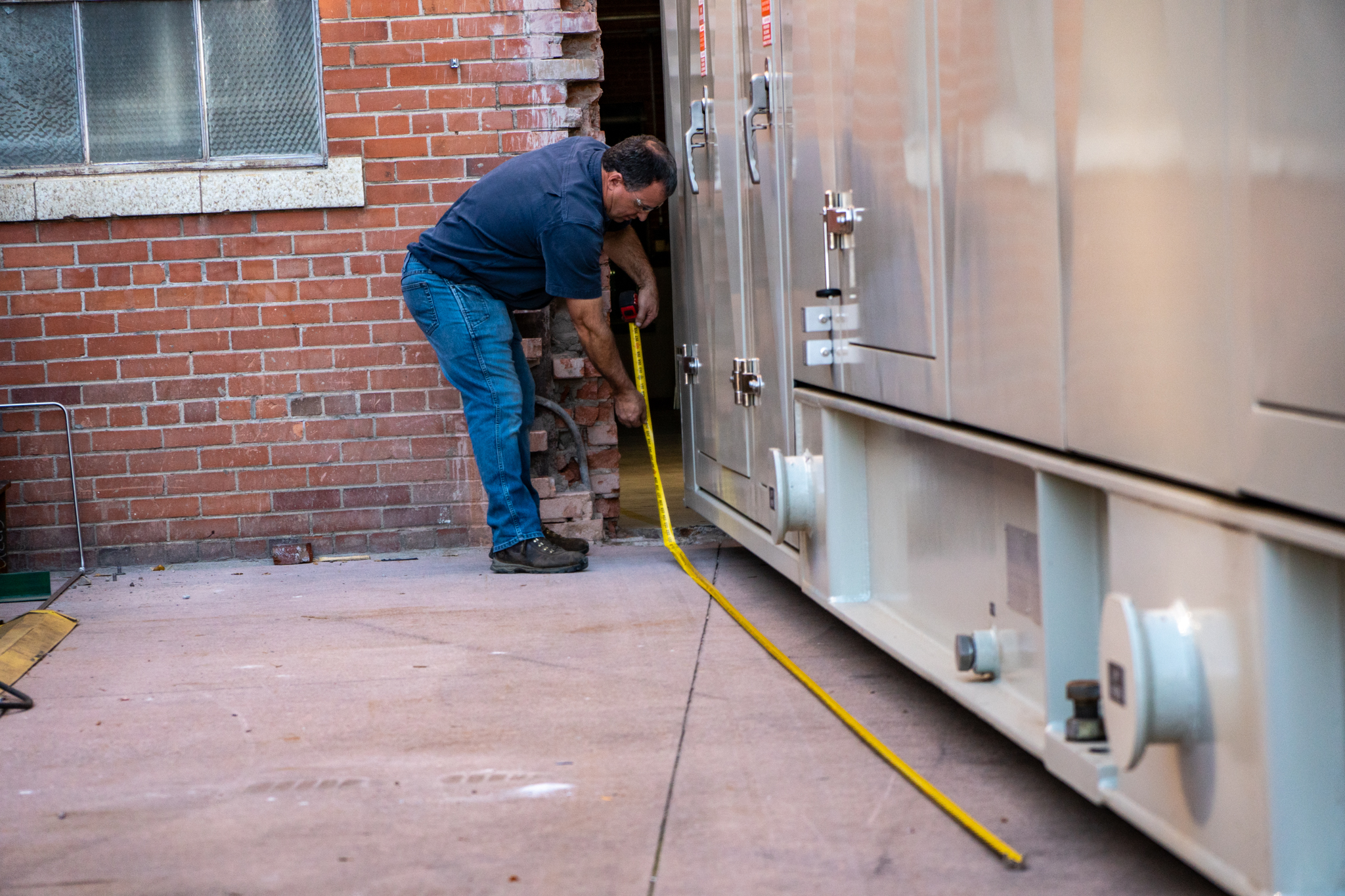
Kirk Evans takes measurements before the turbine is moved inside. Photos by Austin Hannon
The preferred resting place for the new machinery was mostly known since there was an open test cell, but it required demolishing a sizeable lab room. Additional real estate was needed, and occupying the area were two Cummins engines and a Caterpillar engine.
“We basically took the three existing test cells and changed their direction and reconfigured them into one large skid that houses all three engines,” Evans said. “It was a blessing in disguise, because I inherited most of the test cells here when I started in 1997, so this was one of the first chances I had at building one up from scratch for how I wanted it to be. It was a significant amount of work but rewarding.”
With the space figured out, the next step was entry. Pre-2014, a crane would have lifted it up, over and in. However, the Powerhouse Energy Campus expansion now sits on where the crane would station. By process of elimination, the logical pathway had to be through the engines lab’s east doors and by an ancient method dating back 4,500 years.
Move it like Egyptians
To move the boulders that built the historic pyramids, Egyptians used sledges, tracks and rope rolls. A five-person crew from RMS Rigging applied the same technique with modern-day rollers, skates, heavy duty jacks and a forklift, over nine hours of work.
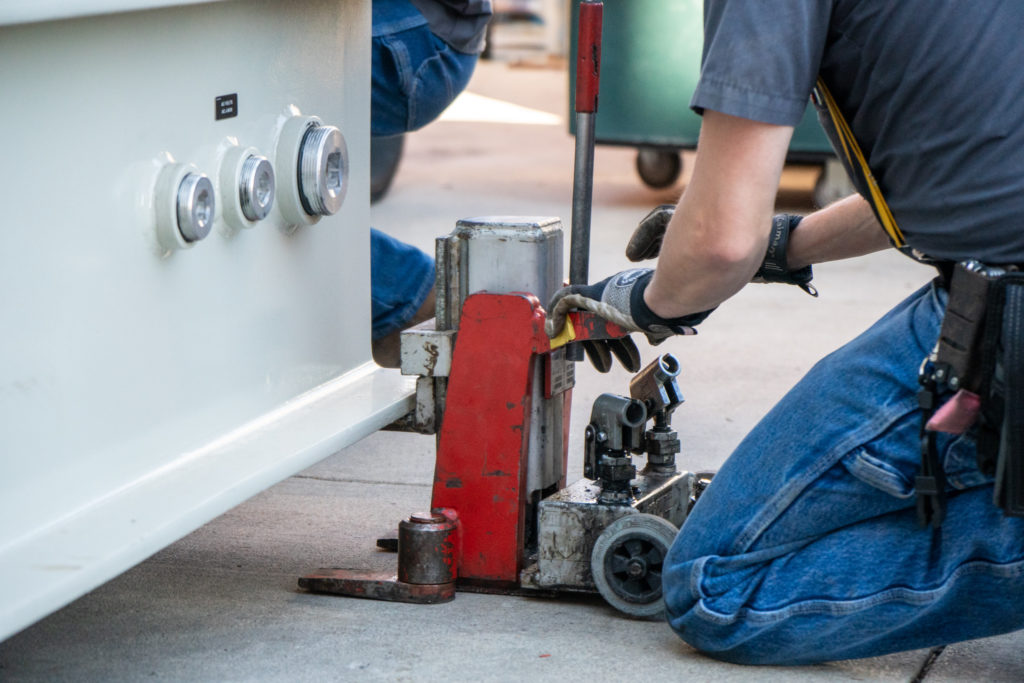


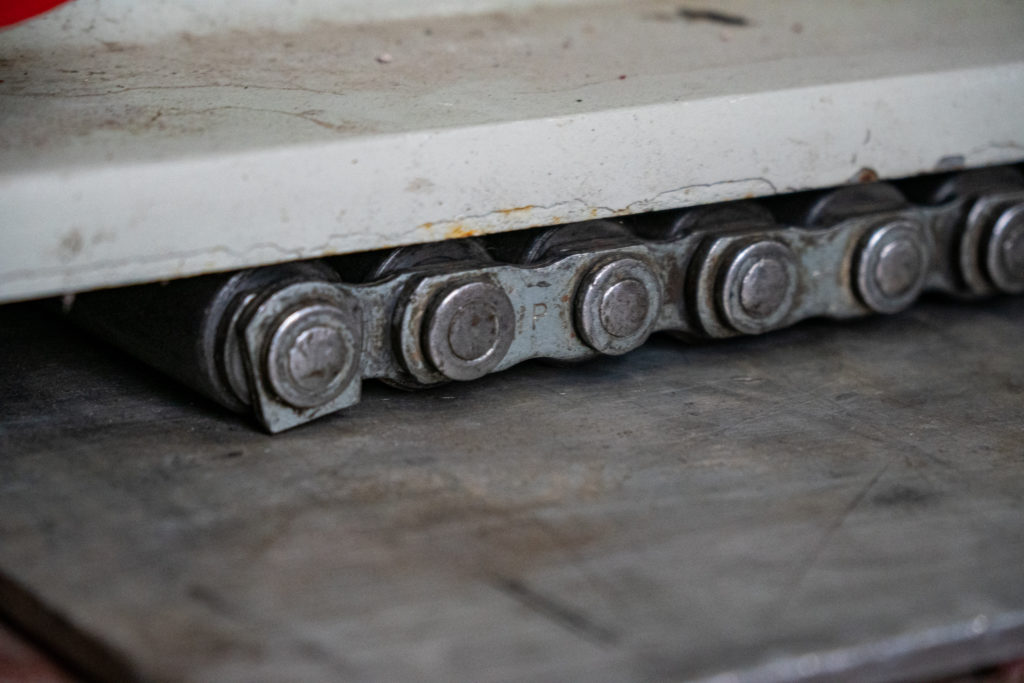
The distance between the turbine’s temporary resting place behind the Powerhouse to its intended home was 166 feet. The first 100 feet got the engine to the door relatively easy on three skates, but that’s when things got tight. The “es” in “inches” is debatable on the clearance for the 8-foot wide and 9.5-foot-high container.
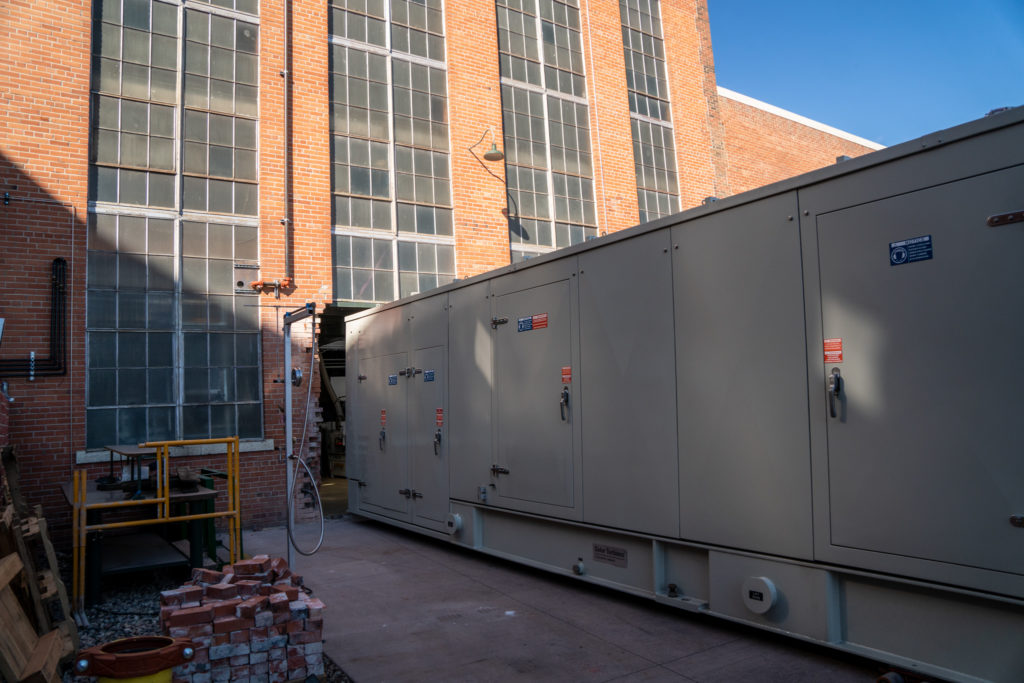


There was a collective sigh of relief once the turbine got through the door, but tedious finesse moves were just around the corner. Before the RMS crew would get to that, a contingent of Powerhouse employees had to dissemble some piping from a different project that was protruding into the path. The last maneuver was a full 90-degree turn that called for an additional forklift and countless repositioning of the skates and rollers, followed by a come-along puller to get the turbine into its final resting place.
Addition brings variety, exciting future

Before
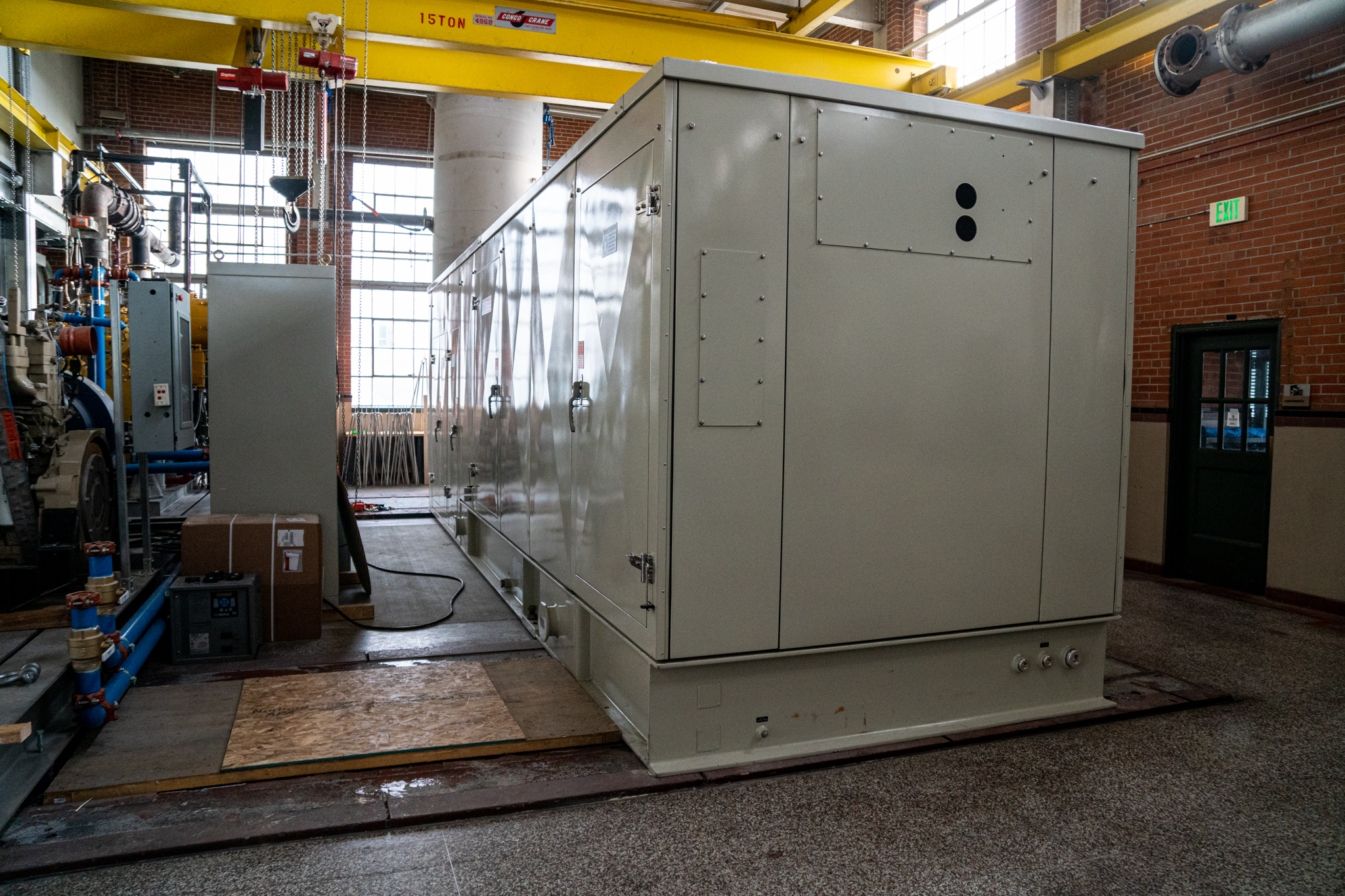
After
The newest addition is a gas turbine instead of a reciprocating engine. The gas fuel will be natural gas and hydrogen, as the Energy Institute and Bret Windom, associate professor in the Department of Mechanical Engineering, rev up their work on a four-year, $4.5 million U.S. Department of Energy project. Led by Solar Turbines, the project aims to develop a retrofittable, dry, low-emissions gas turbine combustion system that can run on 100% hydrogen as well as blends of hydrogen and natural gas.
“There is a lot of excitement from our students and staff that the turbine is in the building, and we can move on to the next phase of the project, which is piping and getting it ready for testing,” Energy Institute Executive Director Bryan Willson said. “The urgency of the mission revolving hydrogen and natural gas mixtures is rising, so the timing couldn’t be better.”
@csuenergyinstitute We’re in the house ! The 3.5-megawatt engine donated from Solar Turbines is in the building! This machine supports clean-energy hydrogen fuel research at @coloradostateuniversity. The 9-hour install included 5 workers, 2 fork lifts, skates, tank rollers, a come along puller, jacks and a whole lotta muscle & patience! #turbine #research #install #forklift #energy #hydrogen ♬ MOVE MOVE MOVE - The Muse Maker